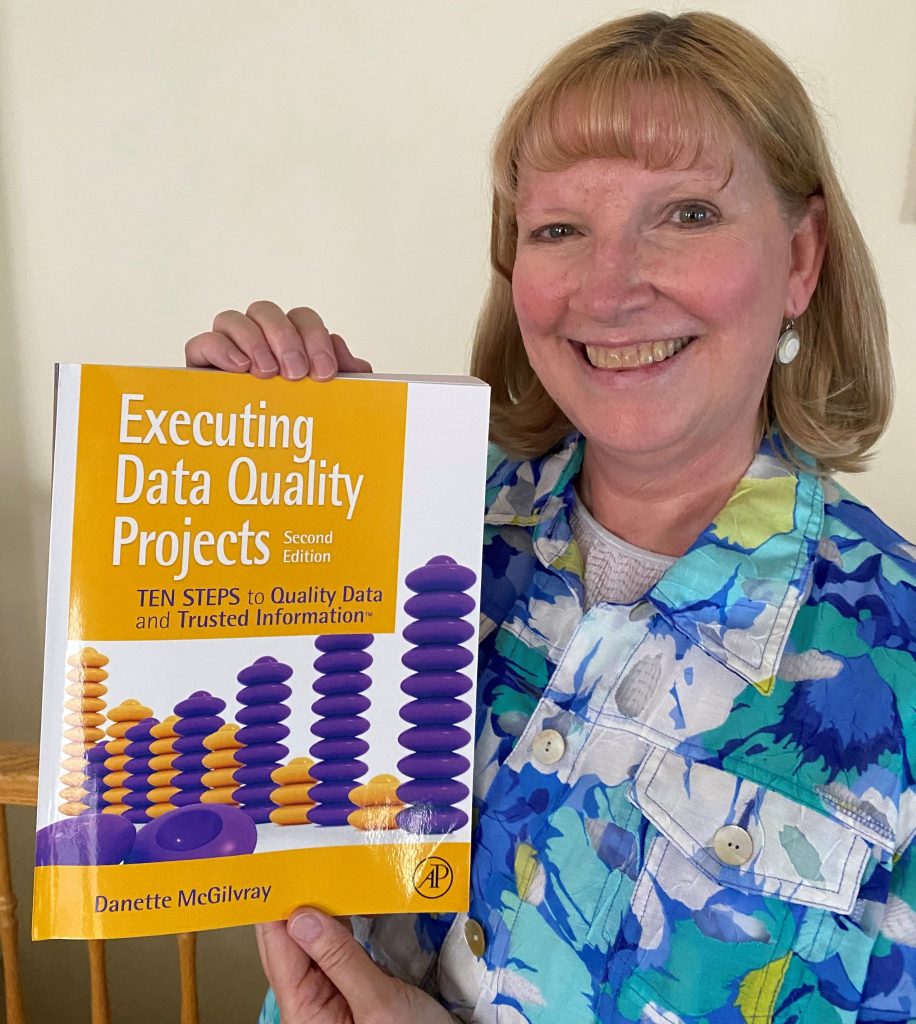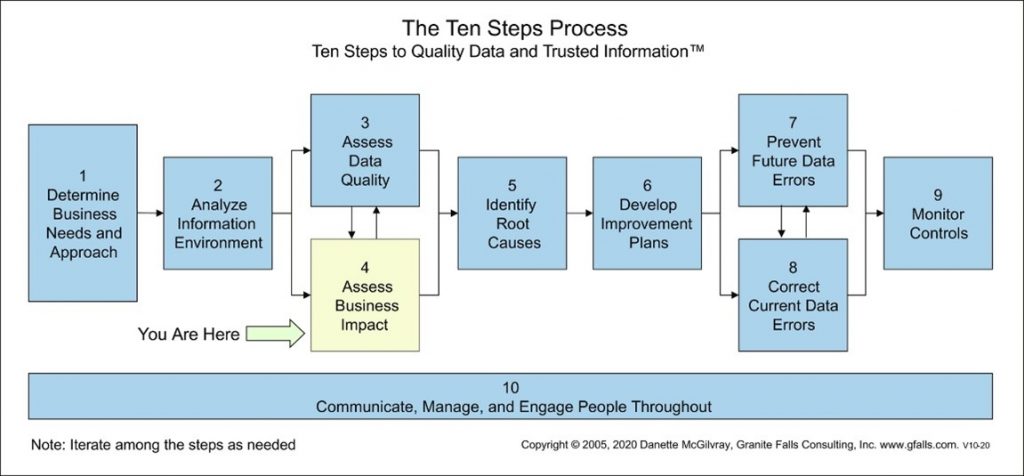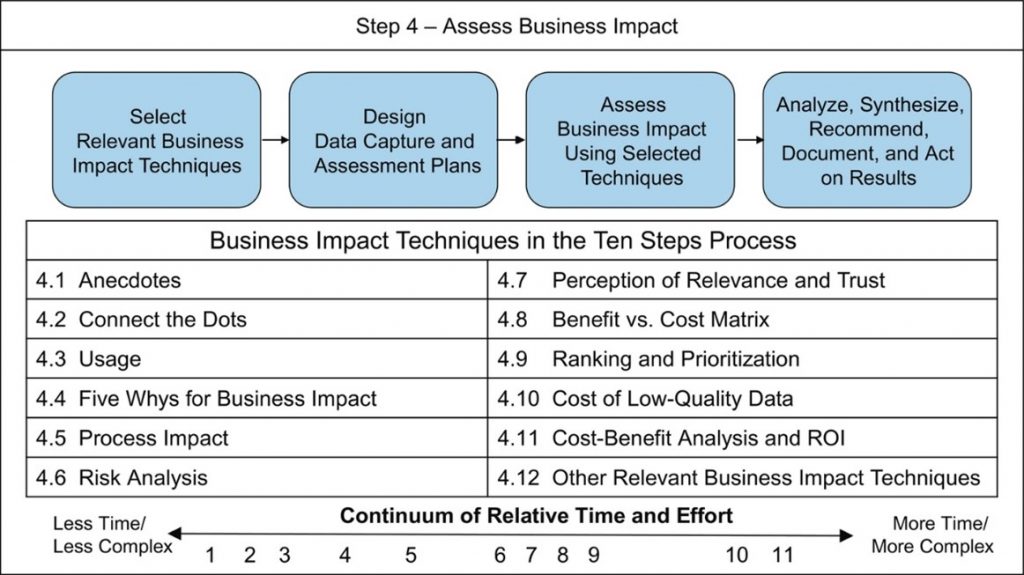Some years ago, my husband and I were watching TV when a news flash broke into the regular programming. There was a gas explosion in a residential neighborhood across the bridge from our home in the California San Francisco Bay Area. We watched as flames soared hundreds of feet into the air. For 90 minutes, the fire continued and the natural gas that fueled it continued to flow. Why?

Danette McGilvray, President, Granite Falls Consulting
Danette will be speaking at the IRM UK Virtual Live Enterprise Data & Business Intelligence and Analytics Conference Europe 15-17 November 2021 on the subject ‘Keynote: Data Quality Can Save the World‘.
She will also be presenting the course, ‘Ten Steps To Quality Data‘ via Live Streaming 1-3 December 2021.
Crews did not know the location of the shutoff valve – a data quality problem that contributed to the final sobering statistics: 8 dead, 58 injured, 38 homes leveled, and 70 other homes damaged. Over the following months, investigations into the cause of the fire confirmed that shoddy pipeline records and inaccurate data were key elements that led to the tragedy.
Can you see how data plays a role in how your organization provides its products and services? Is the data making your organization more efficient and better able to satisfy its customers? Or is the data causing processes to fail, creating rework and time delays, and generating conflict, distrust, and complaints?
Are you able to show how the quality of data impacts your organization? Whenever a data quality problem is found, the first two words usually spoken by management are, “So what?” Management wants to know, “What impact does this have on the business?” and “Why does it matter?” Another way of saying it is, “What is the value of having information quality?” These are important questions. After all, no one has the money to spend on something that is not worthwhile.
There is a way to answer these questions – through what I call business impact techniques. A business impact technique is a qualitative and/or quantitative method for determining the effects of the quality of data on an organization. These effects can be good effects from high-quality data and/or adverse effects from poor-quality data.
Several business impact techniques are offered in Step 4 of the Ten Steps Process, part of the methodology called Ten Steps to Quality Data and Trusted Information™. See figure below. However, the techniques can be used at any time throughout the Ten Steps Process when others question the need for high-quality data “What difference will data quality have on our organization, our business, on my team, on me?”

The next figure lists the various business impact techniques as outlined in the Ten Steps Process. The techniques can be used alone or in various combinations. Think of the list as a menu of choices where you select the technique(s) that are the most appropriate in a particular situation and with the time and resources available. Each of the business impact techniques have been numbered for ease of reference, not because they must be done in any particular sequence.

The Business Impact Techniques are shown in order of the relative time and effort to assess. Each is placed on a continuum with the techniques that take less time and are less complex (starting at 1 on the left) to those, relatively speaking, that take more time and are more complex (ending at 11 on the right). The last technique, 4.12 – Other Relevant Business Impact Techniques, is not on the continuum, because what additional technique someone may use could be placed anywhere depending on the time and complexity the technique involves.
Note that all techniques have proven to be effective. The continuum shows relative effort – not relative results. You can understand business impact even without completing a full cost benefit analysis. Less complicated does not necessarily mean less useful results; more complex does not necessarily mean more useful results. Even though these techniques are focused on data quality, they work equally well when showing the business impact of data governance, metadata, data standards, etc.
The important thing is to do something related to business impact! Too often it is heard, “I don’t have time to look at business impact. I need to work on the data quality problem.” Or “I don’t know how to determine business impact.”
Results from using the business impact techniques help make the usually intangible aspects of data tangible and meaningful to those who have to make tough investment decisions. Business impact is another way of expressing the idea that there is value in having quality information. It is only by showing business impact that management can understand the value of information quality. Use what is learned about business impact to help establish the business case for data quality improvements, gain support from management for data quality work, prioritize efforts, motivate team members to participate in data quality work, and determine appropriate investments in your information resources.
Learn more in Danette’s upcoming course, Ten Steps to Quality Data, livestreaming 1-3 December 2021.
Receive 30% off all Elsevier Science and Technology print books and eBooks at Elsevier.com, including Danette’s second edition click here and use promo code COMP30 when ordering.
Danette McGilvray is president and principal of Granite Falls Consulting, a firm that helps organizations increase their success by addressing the information quality and data governance aspects of their business efforts. Focusing on bottom-line results, Granite Falls’ strength is in helping clients connect their business strategy to practical steps for implementation. Granite Falls also emphasizes the inclusion of communication, change management, and other human aspects in data quality and governance work. Danette is the author of Executing Data Quality Projects: Ten Steps to Quality Data and Trusted Information™ (Morgan Kaufmann, 2008). An internationally respected expert, Danette’s Ten Steps™ approach to information quality has been embraced as a proven method for both understanding and creating information and data quality in any organization. A Chinese-language edition is also available and her book is used as a textbook in university graduate programs. Contact her at danette@gfalls.com, connect with her on LinkedIn: Danette McGilvray, and follow her on Twitter: @Danette_McG.
This article Copyright 2021 by Danette McGilvray, Granite Falls Consulting, Inc. (www.gfalls.com) All rights reserved worldwide.
—————————-
Note: Portions of this article contain material from the book Executing Data Quality Projects: Ten Steps to Quality Data and Trusted Information™ 2nd Ed. (Academic Press/ Elsevier, 2021)by Danette McGilvray. This article copyright 2021 by Danette McGilvray, Granite Falls Consulting, Inc. (www.gfalls.com) All rights reserved worldwide.


